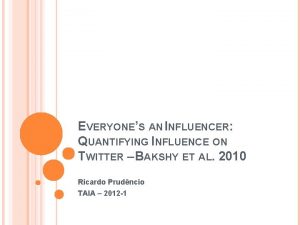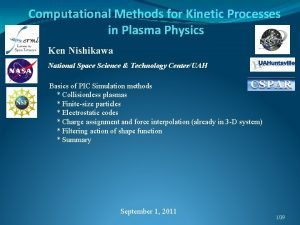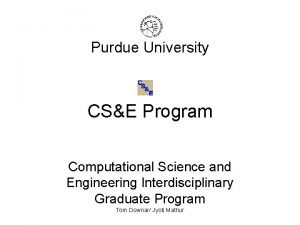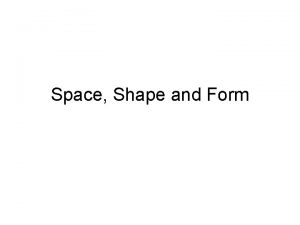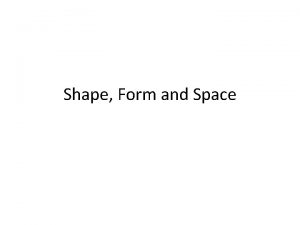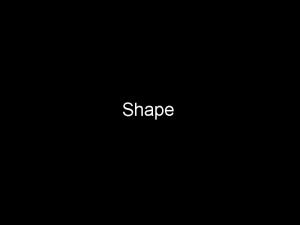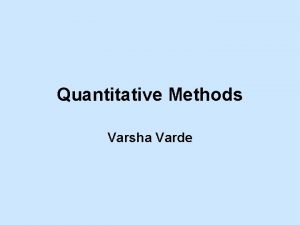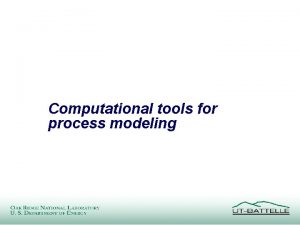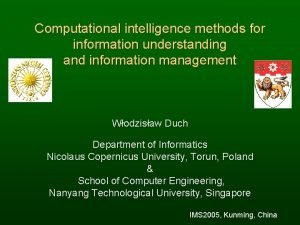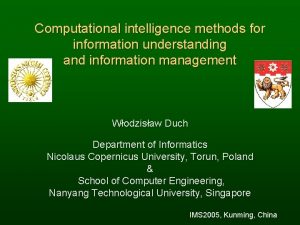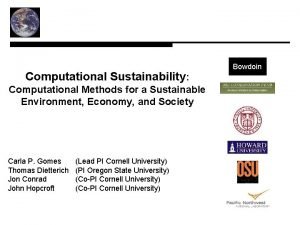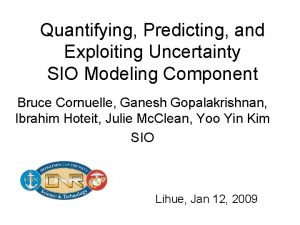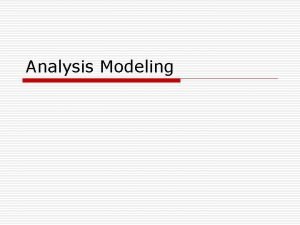Computational methods for modeling and quantifying shape information





















- Slides: 21

Computational methods for modeling and quantifying shape information of biological forms Gustavo K. Rohde Email: gustavor@cmu. edu URL: http: //www. andrew. cmu. edu/user/gustavor/ Center for Bioimage Informatics, Department of Biomedical Engineering Department of Electrical and Computer Engineering Lane Center for Computational Biology

Acknowledgements • • • Soheil Kolouri, BME, CMU Dejan Slepcev, Math, CMU Robert Murphy, Comp. Bio, MLD, BME, CMU MMBio. S Center for Biomage Informatics, CMU • National Institutes of Health P 41, GM 103712

TR&D 3: Topic Tools for understanding morphological/dynamic information in cells Today: focus on cell shapes Yin et al, Bio. Essays, 2014.

Modeling information in cell images Method 1: descriptive Sailem et al, Open Biology, 2014 Method 2: generative models Rohde et al, Cytometry, 2008

Generative models Parametric Non-parametric nuclear shape cell shape space Zhao, Murphy, Cytometry, 2007 Rohde, …, Murphy, Cytometry, 2008 Based on work of Miller et al. , Quart. Appl. Math. 1998

Deformation-based shape distances Shapes can be deformed onto one another. Goal: Find the mapping which causes least amount of “bending. ” Quantifying the difference between shapes using these deformations:

Shape distance definition: distance Previous work: based on the “large deformation diffeomorphic metric mapping” (LDDMM) work of Miller et al, JHU. Improvements described here: • Robustness, more difficult shapes • Make the method faster • Provide options regarding: • types of differences to measure • allowing for different regions have different penalties

Outline of the method Preprocessing: Initial mapping: Energy minimization: • Morphological analysis • Multi-resolution MSE based • Smooth diffeomorphic mapping • Symmetric energy function • Physically meaningful • Gradient descent • Centering • Rotation Energy Gradient descent iteration

Smooth initial invertible mapping Robust smooth invertible initial mapping: • Penalized MSE: • Solved by a multi-resolution gradient descent approach. Interpolate & Multiply by 2

Smooth initial invertible mapping Elapsed time= 3. 96 sec

Physically meaningful energy terms From continuum mechanics, the strain rate tensor, E, is defined as: Based on f and E, we propose the following energy terms: 1. Viscous friction: 1. Volume change: 1. Total mass transport: 1. Compression:

Symmetrizing the energy terms The symmetric energy terms are defined as, We avoid the calculation of the inverse map, g, by rewriting the inverse energy terms as a function of the forward mapping. For instance, where, n=2, 3 is the dimension of the problem and polynomial of the eigenvalues of the Jacobian matrix. is the k’th order symmetric

Symmetric energy terms

Symmetrized similarity measure For two shape images, the symmetrized similarity measure is defined as Where are the mixing coefficients of energy terms. Measurement calibration: • The mixing coefficients are tuned to incorporate the relative importance of each term: – User input – Normalization with respect to data

Why symmetry? • With a non symmetric energy, computations are order dependent. Forward Backward

Why symmetry? • With a symmetric energy, same answer either way. Forward Backward

Sample result

Sample result

Comparison with LDDMM Large errors

Current & Future work • • Finish 3 D implementation Finish testing with sample applications Integrate into our Cell. Organizer Move on to transport-based distances for densities (e. g. proteins) Cell. Organizer. org Microscopy images 3 D cell model

Thank you
 Computational engineering and physical modeling
Computational engineering and physical modeling Helen c. erickson
Helen c. erickson Everyone's an influencer: quantifying influence on twitter
Everyone's an influencer: quantifying influence on twitter Quantifying uncountable nouns
Quantifying uncountable nouns Martin goldberg economic invincibility
Martin goldberg economic invincibility George theodorakopoulos
George theodorakopoulos Measuring country risk
Measuring country risk Computational methods in plasma physics
Computational methods in plasma physics Relational vs dimensional data modeling
Relational vs dimensional data modeling Shape matching and object recognition using shape contexts
Shape matching and object recognition using shape contexts Template matching
Template matching Direct wax pattern technique
Direct wax pattern technique National building information modeling standard
National building information modeling standard Integrated project delivery ppt
Integrated project delivery ppt Cessna airfoil
Cessna airfoil Computational thinking algorithms and programming
Computational thinking algorithms and programming Using mathematics and computational thinking
Using mathematics and computational thinking Purdue computational science and engineering
Purdue computational science and engineering Fspos
Fspos Typiska drag för en novell
Typiska drag för en novell Nationell inriktning för artificiell intelligens
Nationell inriktning för artificiell intelligens Vad står k.r.å.k.a.n för
Vad står k.r.å.k.a.n för


